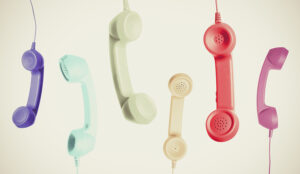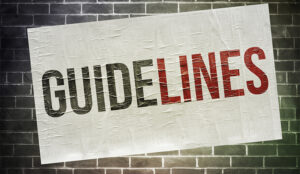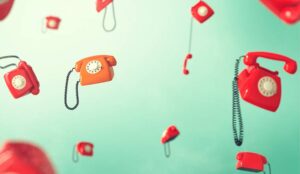Getting started
In this section we are going to examine the fundamental dynamics of an outbound call centre operation. Once you understand how these dynamics differ from an inbound call centre operation, you are well on your way to success. So we make no apologies for spending some time on the basics.
So what are the fundamental dynamics of an outbound call
centre? Essentially they can be summarised as:
- Who is called (and why they are called)
- When they are called
- Which agent makes the call
- What happens if the customer/prospect is not available
Who are you going to call?
At its most fundamental, any outbound call centre is entirely dependent on having the target’s contact details – and in this respect mobile phone numbers can have at least as much value as landlines. Don’t underestimate the value of contact details.
For example, if you are selling a product or service valued at £250 and your contact conversion ratio is 2%, that makes a phone number worth £5 of revenue.
Remember too that in today’s multimedia environment, other contact methods are available to you – and some customers may even prefer to be contacted by SMS or email. Today, the leading outbound diallers can facilitate multimedia customer communications channels, giving you multiple options to create a dialogue with your customer.
Why are you calling?
A really successful outbound call centre is able to run multiple campaigns
using multiple agent groups. And we don’t need to tell you that making
effective contact with your customers or prospects is key to ensuring the
profitability of your business. Just to get you in the mood we have put
together a list of some possible outbound campaigns:
- Use the dialler to contact new prospects, follow-up direct marketing campaigns to qualify leads, or even make appointments on behalf of your sales team
- New customer ‘welcome’ calls to ensure that initial purchases are satisfactory and encourage both repeat and up-sell business
- Maximise staff utilisation by ensuring consumers are available for visits by service engineers and mail order deliveries
- Confirm repeat orders to reduce errors and create up-sell opportunities; for example food and drink distributors contacting retail outlets
- Contract renewal in environments with a predictable product or service life such as car and household insurance, end of loan period and car replacement
- Credit control – calling clients for debt collection purposes
- Increase online conversion by calling visitors to your web site
And this list really is just the tip of the iceberg. We are confident that you will find many more opportunities to create profitable customer
interactions, based on the dynamics of your business and industry sector.
Outbound dialling technology
You will typically need some form of outbound dialling technology.
At its basic level you can do outbound dialling by picking up the phone, keying in the number and away you go. The problem is that this is highly inefficient.
There are a number of automated dialling solutions:
- Preview dialler
- Progressive dialler
- Power dialler
- Predictive dialler
More information on Types of diallers as well as a List of outbound diallers can be found on other parts of this guide.
When are you going to call?
It is fairly obvious that while inbound campaigns are all about having agents in place to respond to incoming calls, the success of outbound campaigns hinges upon reaching your customers – or prospects – when they are available to take your call!
Sounds easy, but in practice this simple fact presents the single most important challenge for successful outbound campaigns. Typically around 50% of all attempts to contact individuals will fail.
So how you deal with those failures is critical, not only because of campaign productivity and staff resourcing issues, but also to ensure you comply with the regulations governing outbound contact. We will talk about this in more detail later.
In this section we are going to look at the issue of timing. In our experience timing is the issue that is most widely misunderstood, so we are going to deal with it up front. If you take this information on board you will be ahead of the game.
Outbound campaigns are essentially sales campaigns; you are aiming to secure a result from your customer, even if that is an indirect result such as checking that your customers are happy or asking them to settle a debt.
So to optimise results you need to call your audience, not only at a time they are likely to pick up the phone, but also at the time that they are most
likely to be in ‘buying’ mode.
More information on dialling times can be found at
Tip
Take every opportunity to capture contact details and gain permission to use these details to make contact. Make sure that all response mechanisms request at least a phone number and ideally request a mobile number and email address.
Consider incentives in your inbound call centre to obtain contact details.
What happens when contact fails?
As we said right back at the beginning, typically half of all attempts to contact consumers on the phone will fail to connect to a live person – there could be no-one available to answer the call, the number could be busy or you might reach an answer machine.
To ensure that you make as many contacts as possible you need to set some rules for what should happen in the case of a non-contact.
Where you are using an automated dialler these rules should be programmed into the system. Determining the rules is another area where common sense provides a good starting point.
No answer
If you don’t get an answer there’s no-one free to take your call.
The ‘common sense’ thinking in this case is to make the next attempt in a subsequent ‘session’, that is, if the first call attempt is made in the morning make the next in the afternoon, and so on.
Busy
Whilst it’s frustrating to get a busy tone it’s actually a reasonably good sign. Someone is there, but they are on the phone. The logic here is to try again fairly quickly, typically within 15 minutes. But if you repeatedly get ‘busy’ then it makes sense to gradually lengthen the time between call attempts.
Answer machines
You call your customer and reach an answer machine. What does it mean?
A few years ago the answer was simple, the customer’s phone has rung and nobody is available to take the call. You should probably wait a while before calling again. But things have changed. With today’s ‘in network’ messaging systems, such as BT 1571, reaching an answer machine can also mean that the customer is available but busy on the phone.
You should set your campaign strategies so that the first redial of an answer machine outcome should match your ‘Busy’ strategy and that subsequent redials match the ‘No answer’ strategy.
You have tried, tried and tried again…
… so what do you do next? Sometimes you can’t make direct contact with some of your audience in the time available.
In today’s multimedia environment other contact methods are available to you. If your data includes mobile phone numbers and email addresses you could use text-based media (SMS and email) to get in touch.
Further reading
Contributors
Author: Jonty Pearce
Published On: 14th Mar 2010 - Last modified: 14th Jun 2024
Read more about - Workforce Planning, Ken Reid, Outbound dialling, Outbound Dialling Guide
















i want to start a outbond call centre in new delhi . which types of legal formalities & financial investment should enough .